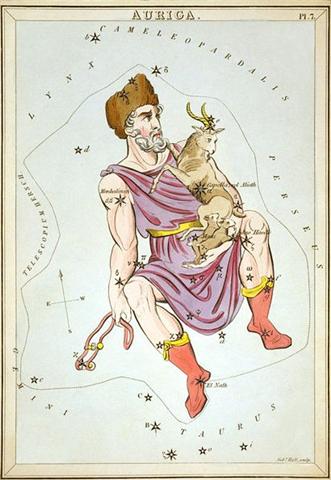|
4. More from Rendell Harris: "But here we are not quite sure that the artist has treated the subject fairly: for, in the first place, Plutarch tells us (De amore frat. § 1) that the cross-beams were double, in which case we ought to have a representation of the form |=| |=| : and in the next place, it looks as if the repetition of the symbol were a mistake of the artist, who did not realize that one such sign stood for the pair of Dioscuri. If the sign with double cross-beams be the correct one, we could then compare it with the unfinished brick wall which is the sign of the twins in Babylonia; but we need more information on this point from Spartan and other monuments. It has something to do with building, but what the particular thing is that is being builded is not so clear. And it is quite possible that the Verona monument is right, as far as Italy is concerned, and that it varied its Dokana from the traditional Spartan form ..." The horizontal orientation in Verona (neither exactly Π nor exactly Η) indicates, I think, the path of Moon rather than the path of Sun. This idea agrees with the name Argenidas, because argentum means silver. Allen: "The Arabians drew them [the Gemini twins] as Peacocks, from which came a medieval title, Duo Pavones; some of the Chaldeans and Phoenicians, as a Pair of Kids following Auriga and the Goat, or as Two Gazelles; the Egyptians, as Two Sprouting Plants; and Brown reproduces a Euphratean representation of a couple of small, naked, male child figures, one standing upon its head and the other standing upon the former, feet to feet; the original Twins being the sun and the moon, when the one is up the other is generally down; a variant representation showing the positions reversed and the figures clothed." Here is much to say. To begin with, we can remember the single Peacock (α Pavonis) - cfr at Atlas and Pleione - a star rising 250 days after Celaeno (the eldest of the Pleiades sisters):
If a pair of Peacocks were in Gemini, they could possibly be depicted here:
Castor (the mortal one) would die in a Monday (appropriately enough for a Sun 'garment'). Ihe tau spells 'death'. The immortal Pollux would instead be highly alive, with a formidable beak. Obviously the common denominator in Gemini is a pair of very young ones. This idea seems to have been tranferred to later constellations, for instance to the otherwise difficult to explain kids in Auriga:
The Old Goat is evidently succeeded by twin youngsters, and maybe the Charioteer has a felt cap. The star above the cap is δ (Δ) Aurigae - Prajapāti, the Lord [King] of Created Beings.
|
||||||||||||||||||||||||||||||||||||||||||||||||||||||||||||||








